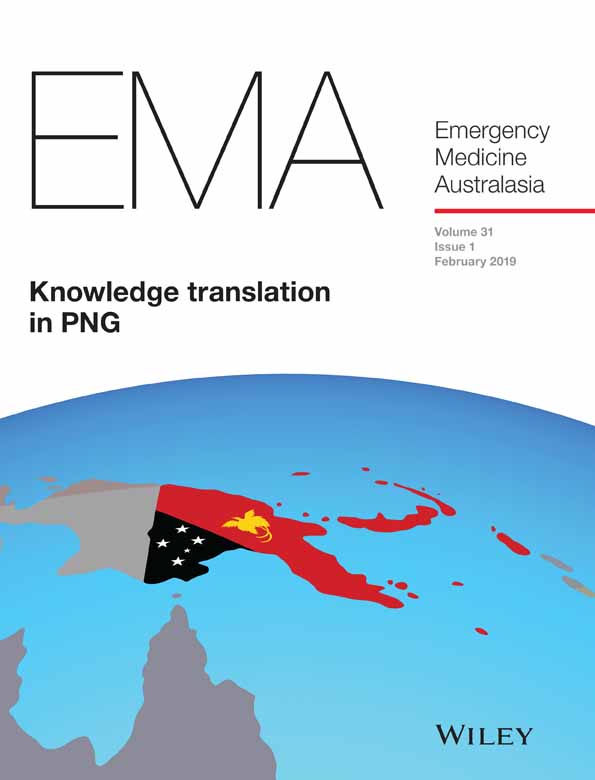Message in a bottle: How evidence-based medicine and a programme change model improved asthma management in a low-income emergency department in Papua New Guinea
Abstract
Objective
To improve asthma care in a complex, low resource, developing country setting. This observational study was carried out in a challenging low-income real-life setting in the ED at Modilon Hospital, Papua New Guinea. The only government hospital in Madang Province, with 258 beds, it provides medical care to a population of nearly 700 000 people of whom 40% live on less than US$1.25/day.
Methods
An asthma management analysis questionnaire followed by action research, with a four-step programme change model (exposure, adoption, implementation and practice), were used to develop and implement new department asthma guidelines. Staff perceptions were gathered via discussion groups and questionnaire.
Results
Asthma management initially involved frequent antibiotics, intravenous steroids, multiple short acting bronchodilators (oral, inhaled and nebulised) and limited oral steroids. No spacers, preventative inhaled steroid therapy or asthma action plans were used. On review after new guideline implementation staff felt antibiotic dispensing and concurrent use of multiple short acting oral bronchodilators decreased and spacer, preventer therapy and action plan use increased.
Conclusion
This project highlights the difficulties experienced with change management, both in general and in a limited resource setting. Lack of data limits conclusions about asthma management improvement. However, positive trends were apparent and make this approach reasonable for those considering change management strategies in a similar setting.




